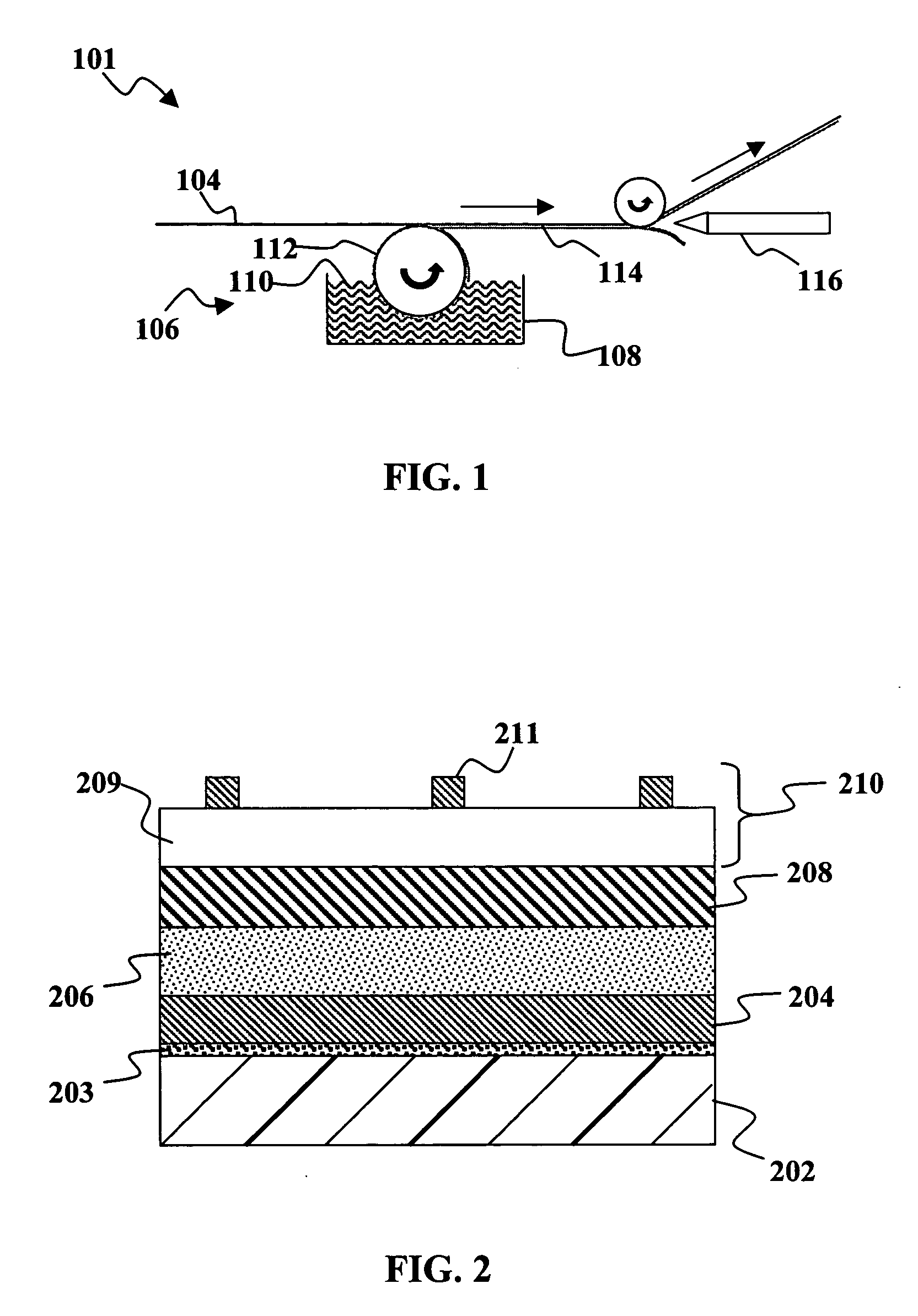Photovoltaic thin-film cell produced from metallic blend using high-temperature printing
a technology of photovoltaic cells and metallic blends, applied in the field of photovoltaic cells, can solve the problems of limited production of solar cells, limited low-speed processes, and inability to control the stoichiometric ratio of co-deposited materials with high-cost, coincident vapor phase processes
- Summary
- Abstract
- Description
- Claims
- Application Information
AI Technical Summary
Problems solved by technology
Method used
Image
Examples
Embodiment Construction
[0008] Although the following detailed description contains many specific details for the purposes of illustration, anyone of ordinary skill in the art will appreciate that many variations and alterations to the following details are within the scope of the invention. Accordingly, the exemplary embodiments of the invention described below are set forth without any loss of generality to, and without imposing limitations upon, the claimed invention.
[0009] According to embodiments of the present invention, the metallic components of a IB-IIIA-VIA photovoltaic cell active layer may be directly coated onto a substrate by using relatively low melting point (e.g., less than about 500° C.) metals such as indium and gallium. Specifically, CI(G)S thin-film solar cells may be efficiently and reproducibly fabricated directly from a metallic solution by blending one or more molten group IIIA metals with solid nanoparticles containing group IB and (optionally) group IIIA metals. The molten mixtu...
PUM
| Property | Measurement | Unit |
|---|---|---|
| size | aaaaa | aaaaa |
| size | aaaaa | aaaaa |
| size | aaaaa | aaaaa |
Abstract
Description
Claims
Application Information
 Login to View More
Login to View More - R&D
- Intellectual Property
- Life Sciences
- Materials
- Tech Scout
- Unparalleled Data Quality
- Higher Quality Content
- 60% Fewer Hallucinations
Browse by: Latest US Patents, China's latest patents, Technical Efficacy Thesaurus, Application Domain, Technology Topic, Popular Technical Reports.
© 2025 PatSnap. All rights reserved.Legal|Privacy policy|Modern Slavery Act Transparency Statement|Sitemap|About US| Contact US: help@patsnap.com


